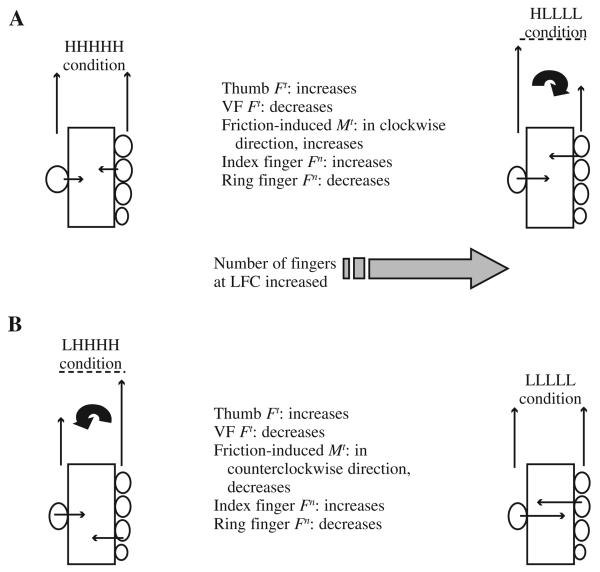FIGURE 10.
Schematic graph showing the effects of increasing slipperiness on biomechanics of prehension. When the slipperiness increased, the virtual finger (VF) tangential force Ft decreased and the thumb Ft increased by equal amount. The effects of those changes on the friction-induced moments (Mt), however, depended on the thumb friction. (A) The thumb at high-friction contact (HFC). At zero slipperiness (all fingers are at the HFC), the thumb and VF Ft were equal and the friction-induced Mt was zero. With the increased slipperiness, the difference between the thumb and VF Ft—as well as the friction-induced Mt—emerged and built up. The friction-induced Mt in the clockwise direction was generated. (B) The thumb at low-friction contact (LFC). At zero slipperiness (all fingers were at the HFC), the thumb and VF Ft were not equal and the friction-induced Mt was in the counterclockwise direction. With the increased slipperiness, the difference between the thumb and VF Ft, as well the friction-induced Mt, decreased. Fn is the normal force. See Figure 2 for explanation of conditions.

